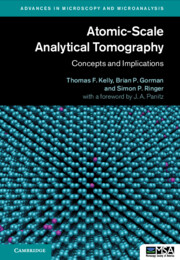Book contents
- Atomic-Scale Analytical Tomography
- Advances in Microscopy and Microanalysis
- Atomic-Scale Analytical Tomography
- Copyright page
- Dedication
- Contents
- Foreword
- Atomic-Scale Analytical Tomography (ASAT)
- Preface
- Acknowledgments
- Introductory Section
- 1 The Need for ASAT
- 2 History of Atomic-Scale Microscopy
- 3 Development of ASAT as a Concept
- Core Section
- Implications Section
- Index
- References
1 - The Need for ASAT
from Introductory Section
Published online by Cambridge University Press: 03 March 2022
- Atomic-Scale Analytical Tomography
- Advances in Microscopy and Microanalysis
- Atomic-Scale Analytical Tomography
- Copyright page
- Dedication
- Contents
- Foreword
- Atomic-Scale Analytical Tomography (ASAT)
- Preface
- Acknowledgments
- Introductory Section
- 1 The Need for ASAT
- 2 History of Atomic-Scale Microscopy
- 3 Development of ASAT as a Concept
- Core Section
- Implications Section
- Index
- References
Summary
The historical backdrop for the role of microscopy in the development of human knowledge is reviewed. Atomic-scale investigations are a logical step in a natural progression of increasingly more powerful microscopies. A brief outline of the concept of atomic-scale analytical tomography (ASAT) is given, and its implications for science and technology are anticipated. The intersection of ASAT with advanced computational materials engineering is explored. The chapter concludes with a look toward a future where ASAT will become common.
Keywords
Information
- Type
- Chapter
- Information
- Atomic-Scale Analytical TomographyConcepts and Implications, pp. 3 - 10Publisher: Cambridge University PressPrint publication year: 2022
